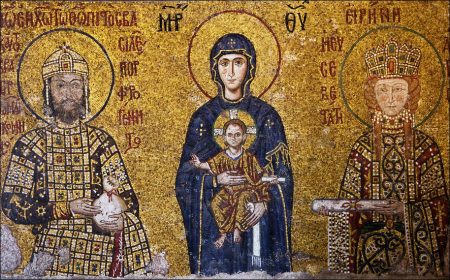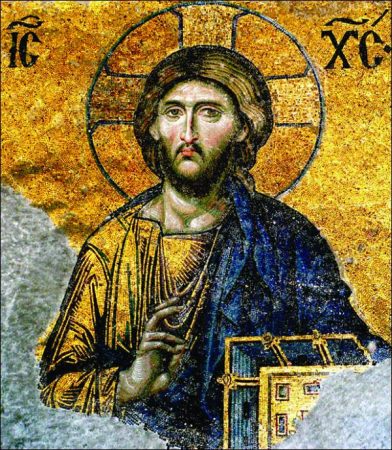Europe nd Asia meet in Turkey with the Bosphorus as the dividing line. On her borders are Greece, Bulgaria, Armenia, Georgia, Iran, Iraq and Syria. It is a country on which 12 different civilizations have left their mark and is rich in antiquities.
It has the ruins of the Greeks, Romans, the Assyrians, Persians, Hittites and Mongols. The Narthex of St. Sophia is divided into vine bays with quadripartite vaults.
Each bay gives access to the interior of the Mosque, which thus may be entered through the great central portal and through the four lesser openings to the North and four to the South of it. Above the marble facing of the walls extends a frieze of opus sectile (height, 0·47 m.) which is separated from the mosaic lunettes and vaults by a vine moulding of stucco. The length of a unit of the mould is 0·87 m. The frieze had by the nineteenth century fallen into a state of such dilapidation that the Fossati covered it with a copy of its design in paint, but it is possible to regain certain lengths of it intact.
The frieze of opus sectile constitutes a ribbon border formed of three longitudinal bands. These bands, of which the central one is wider than the upper and lower mutually similar ones, are edged by four plain, marble creases. The upper and lower creases are yellow and rosy in colour; the two creases framing middle band of the frieze are white.
The designs on the three bands of the frieze are of unequal force. The effect of the central band predominates over that of the upper and lower ancillary zones, each of which repeats a simple theme. This consists of a restrained, undulating figure produced by a series of loosely flowing M’s, presented alternately uptight and reversed.
Views: 183




